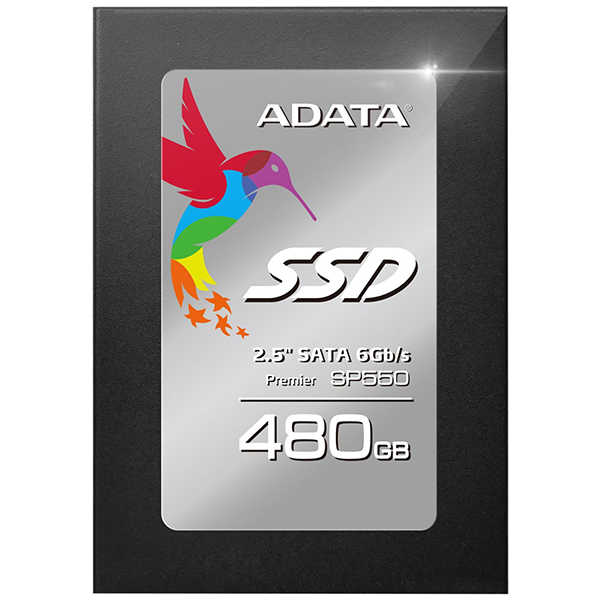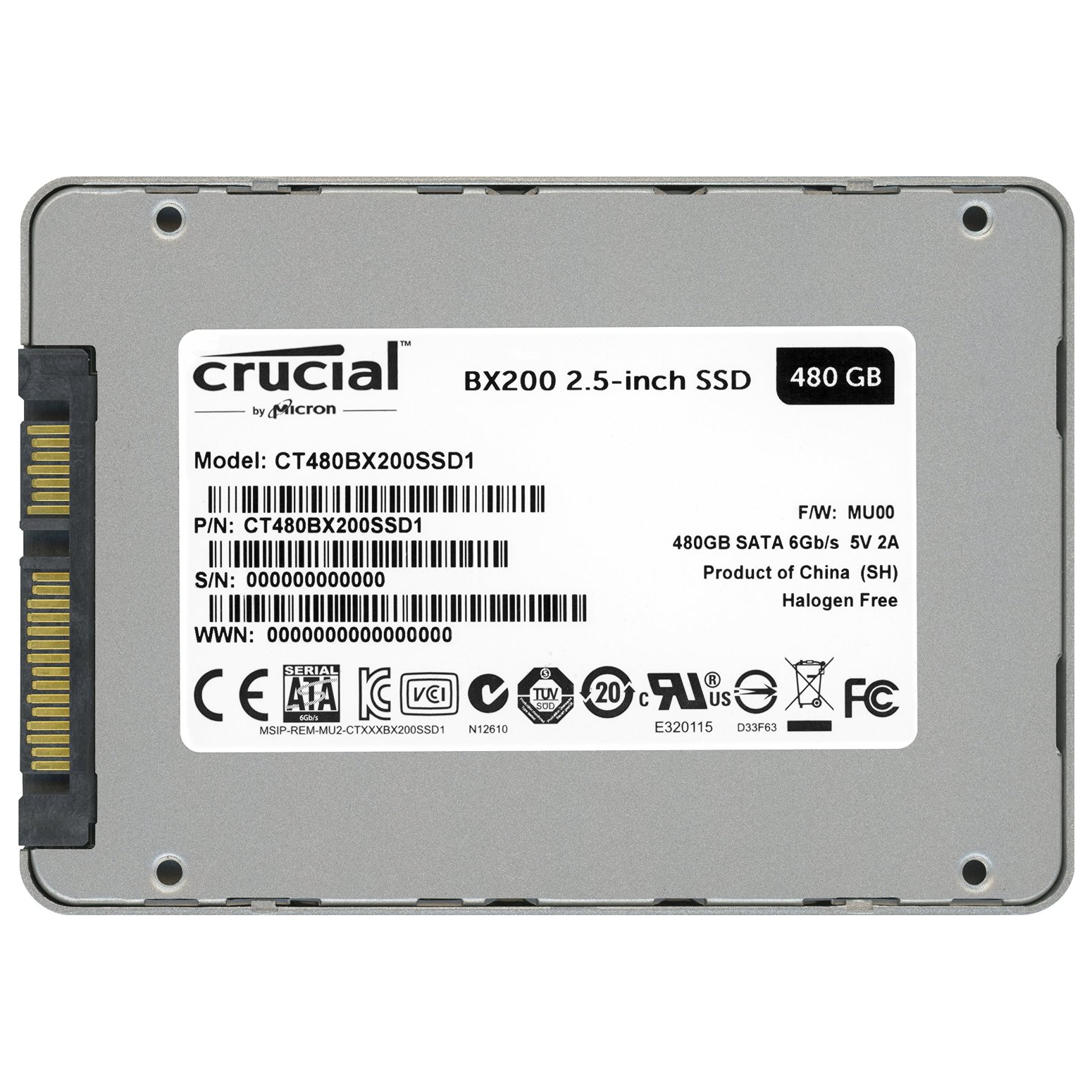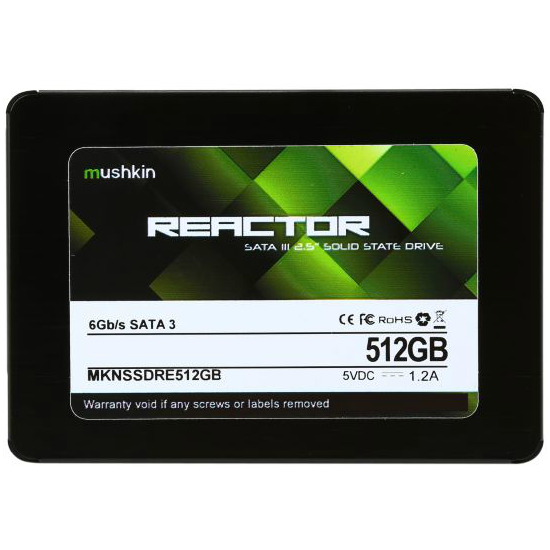PNY CS1311 SSD Review
Why you can trust Tom's Hardware
Four-Corner Performance Testing
Comparison Products
PNY's CS1311 SSDs fall into the entry-level category. We started isolating drives in this group several months ago and built charts with similar products for comparison.
Many of the contenders in this group use triple-level cell flash, including Samsung's 850 EVO, which stands out from the others with superior performance and the best overall value. Mushkin's Reactor SSD is the only model on the charts with multi-level cell flash. We often find it selling for value-oriented prices on Amazon and Newegg.
The Adata SP550, Crucial BX200 and OCZ Trion 150 also make the list. They typically fall to the bottom of the performance charts, but are priced aggressively.
Native TLC Performance And Data Type Comparison
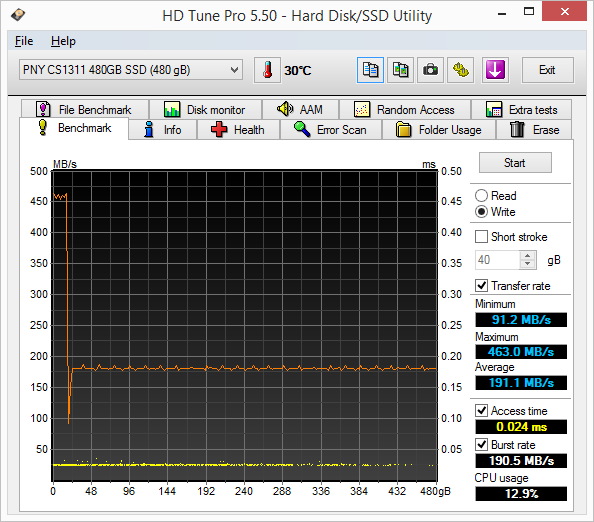
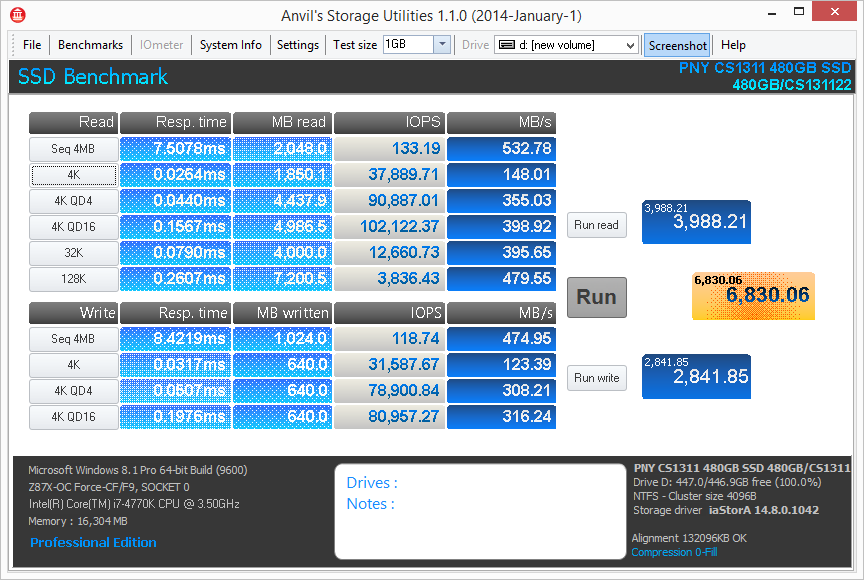
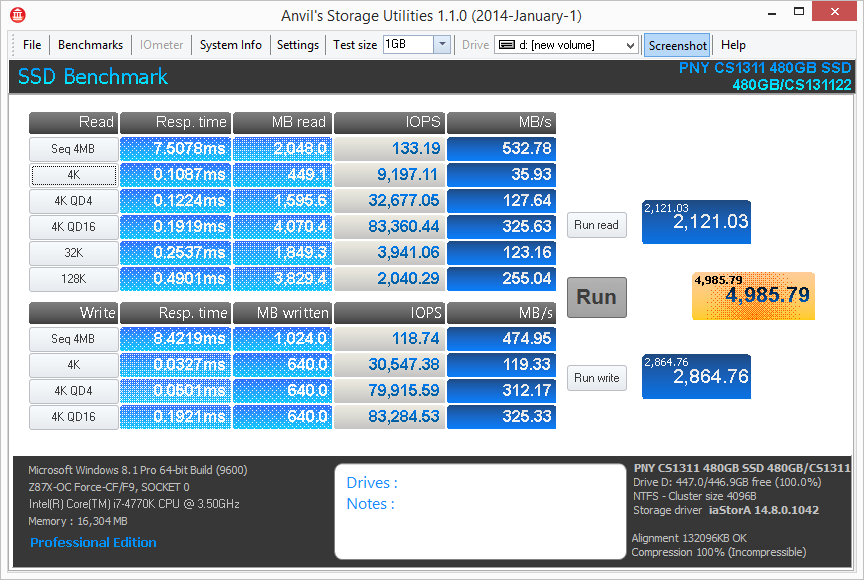
Before we dive into our standard suite, there are a couple of pretests to look at. These will help to explain performance later in the review.
The first looks at native TLC sequential write speed. In HD Tune Pro 5.50, we write 128KB blocks of data sequentially to the drive's full LBA span. The resulting graph shows us performance from the emulated SLC buffer and then the native throughput of TLC memory. PNY's 480GB CS1311 hits 190 MB/s after the SLC cache is exhausted. That's fast enough keep up with file transfers over a GbE network, at least. The 240GB model drops to 170 MB/s, which is also fast enough to write across a network without slowing the transfer down. But both drives come close to the speed of today's fastest 3.5-inch, 7200 RPM hard drives. To be sure, the new direct-to-die write algorithm nearly doubles performance, delivering a large improvement over older S10-based SSDs with TLC flash.
The Anvil Storage Solutions tests provide a performance snapshot with compressible and incompressible data. At least in synthetic testing, the S10 controller can accelerate transfers of compressible information.
To read about our storage tests in-depth, please check out How We Test HDDs And SSDs. Four-corner testing is covered on page six of our How We Test guide.
Get Tom's Hardware's best news and in-depth reviews, straight to your inbox.
Sequential Read Performance

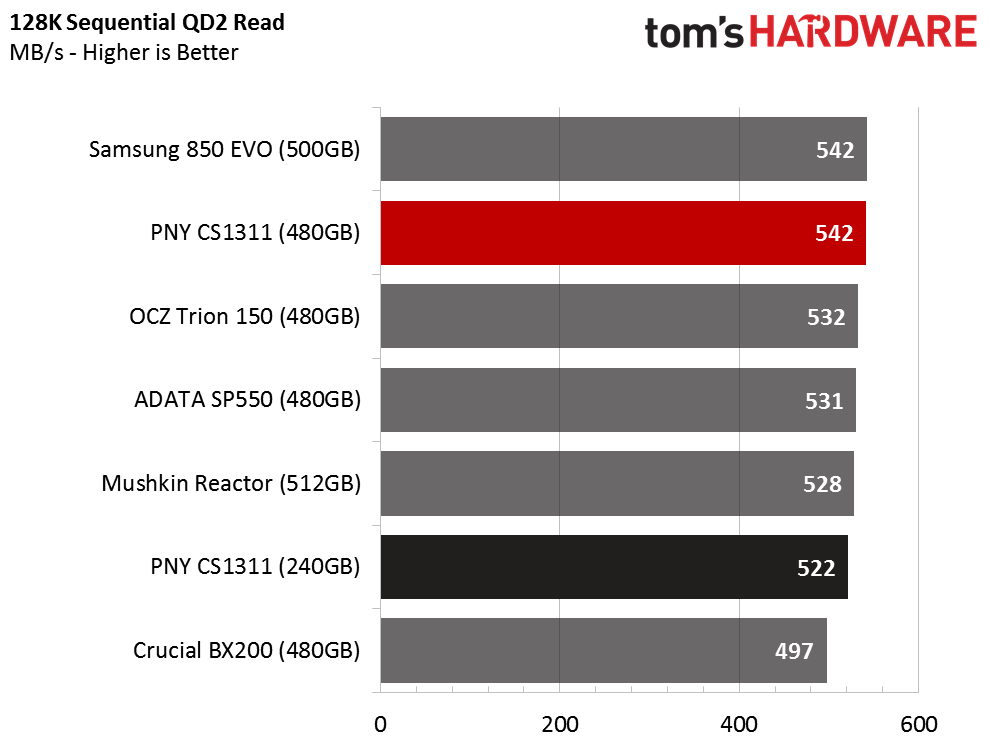
Phison-based SSDs have always delivered strong sequential read performance. This dates back to the PS3105-S5 processor released in 2012. The 480GB PNY CS2211 scored 542 MB/s in our test at a queue depth of two. That's even a little higher than the MLC-based 480GB CS2211 XLR8 we tested previously. The 240GB CS1311 trails many of the larger models, but still impressed us with a strong showing at low queue depths.
Sequential Write Performance

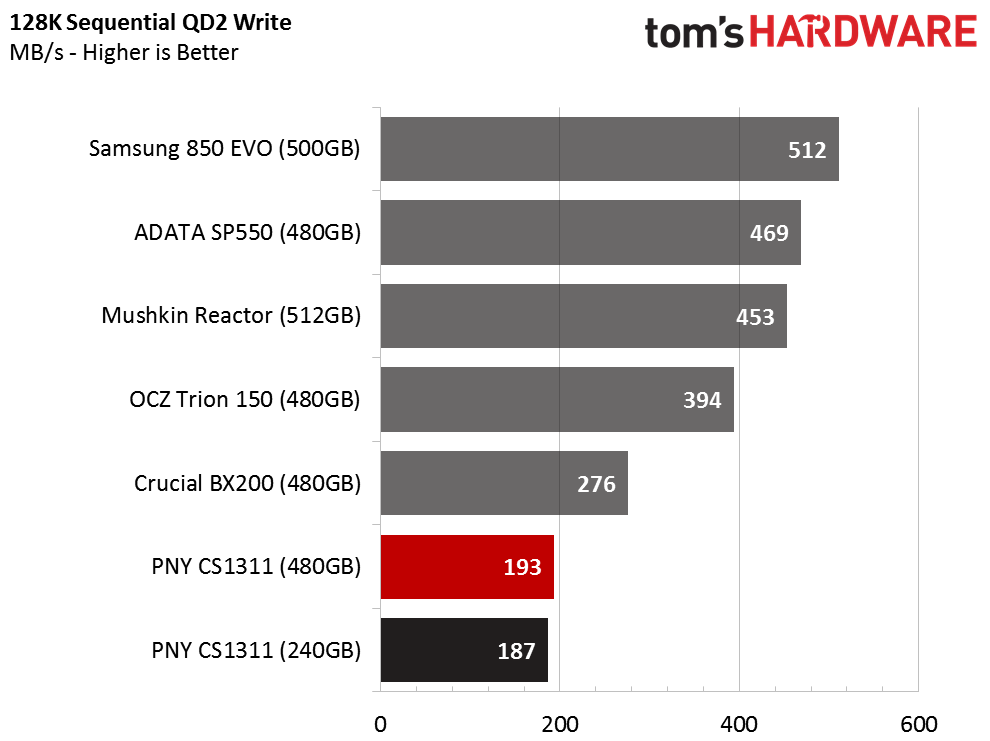
Both of the CS1311s we're testing post lower sequential write numbers than we were expecting. We looked at other tests run on Phison S10-based drives with TLC flash and couldn't find evidence of this same condition. PNY uses a custom firmware version number, so we are not sure what Phison software is running on the drive to compare against other SSDs with the same controller.
If we were to guess, we'd hypothesize that the emulated SLC buffer is flushing data at a much lower rate than the other S10-based drives with TLC in our charts. In between each of the queue depth tests, we insert a five-second pause called think time. This normally allows each drive to flush its buffer between runs, facilitating a little more variability in the results with SLC mode. You see the effect as wavy lines in the chart.
It also keeps the SSDs out of steady state so they deliver results more like what you see in the real world. PNY's CS1311s are the first SSDs we've tested that drop into sequential steady state with the think time in place. This could have a real impact on performance while multitasking in applications that write several large pieces of data in short succession.
Random Read Performance
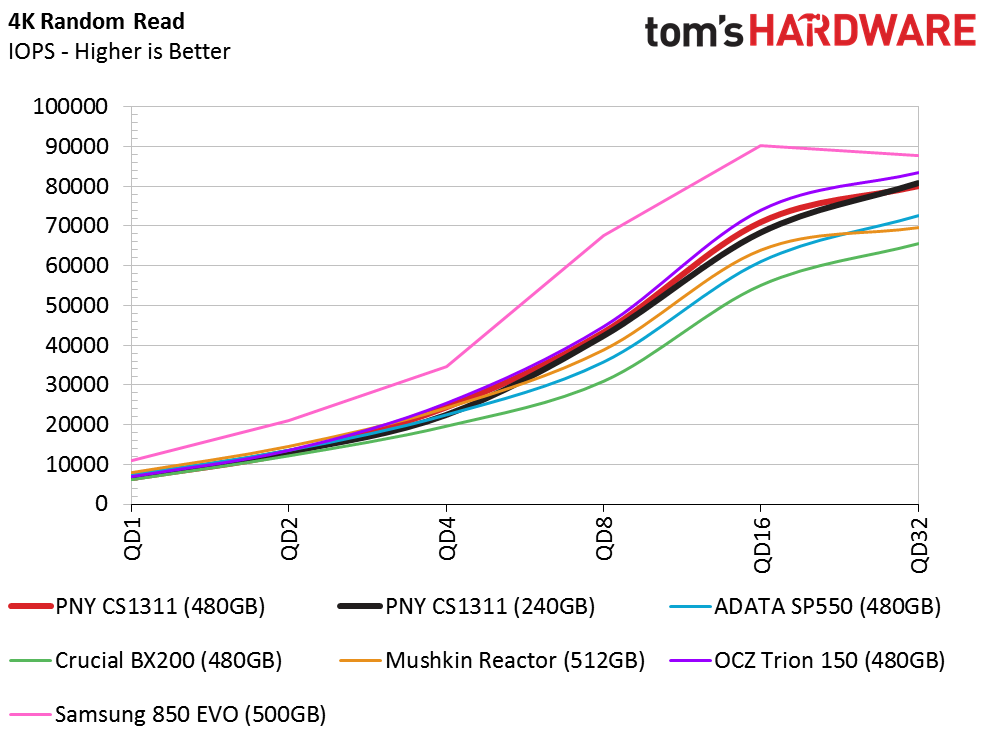


The line chart shows the two PNY CS1311 SSDs more positively. But once we look at the raw results, we see that these products suffer from low random read performance at a queue depth of one.
Tht chart also shows us why SSD vendors have a hard time selling entry-level and mainstream SSDs. Samsung's 500GB 850 EVO (available for as little as $147) dominates in our random performance metric. Meanwhile, PNY's 480GB CS1311 sells for $140. But is a $7 savings really enough to overlook such a sizeable difference? We don't think so.
Random Write Performance
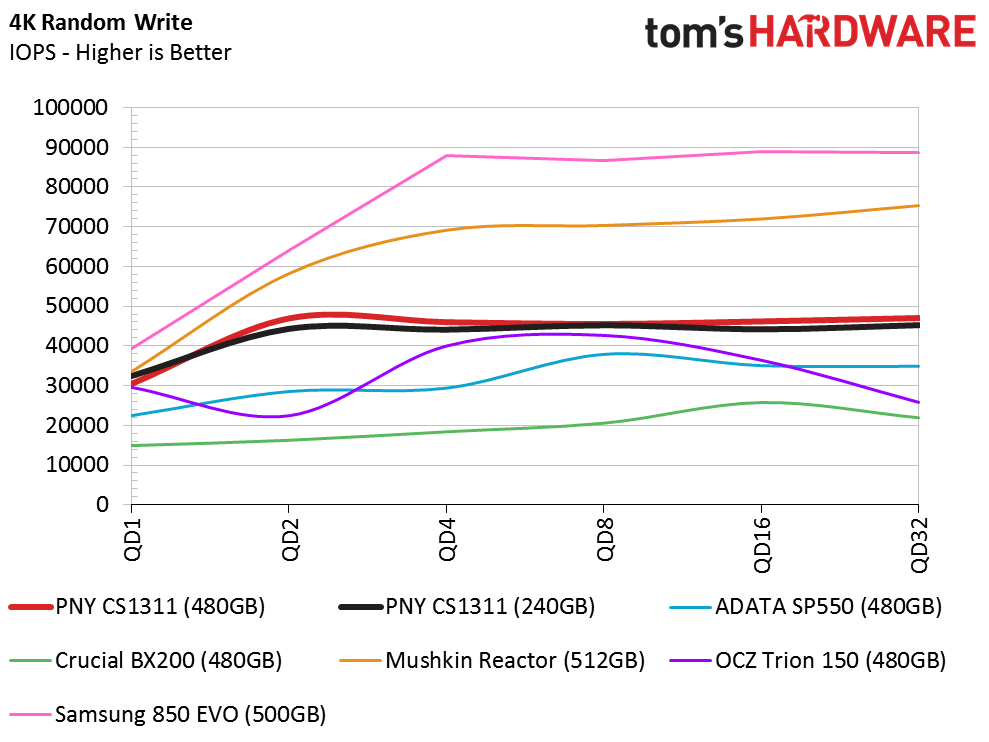
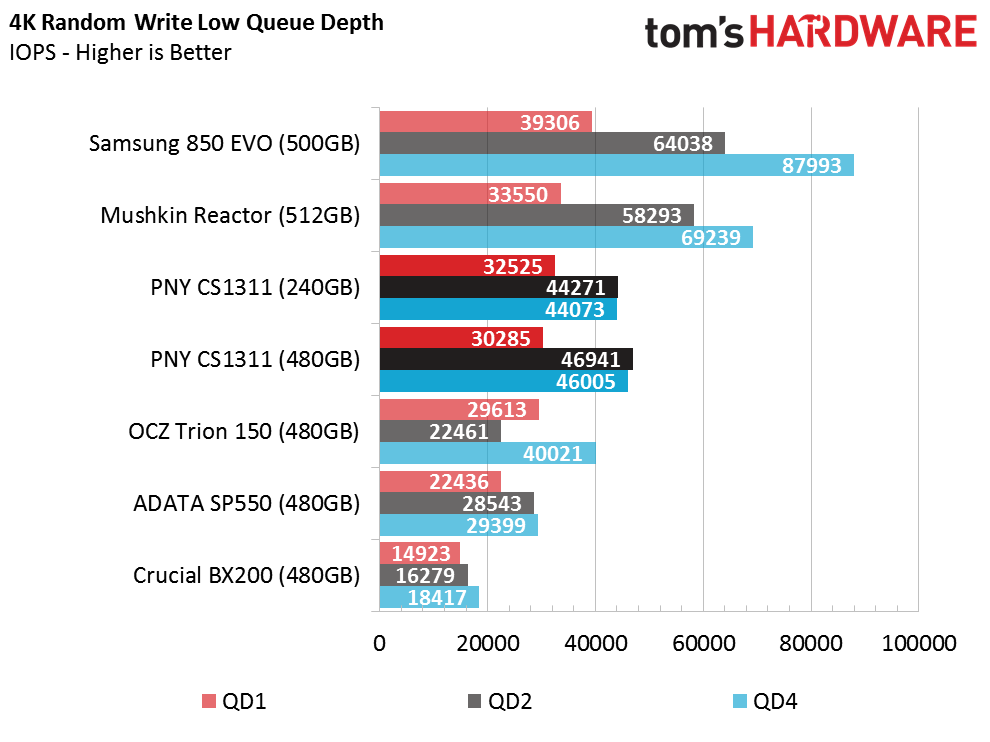
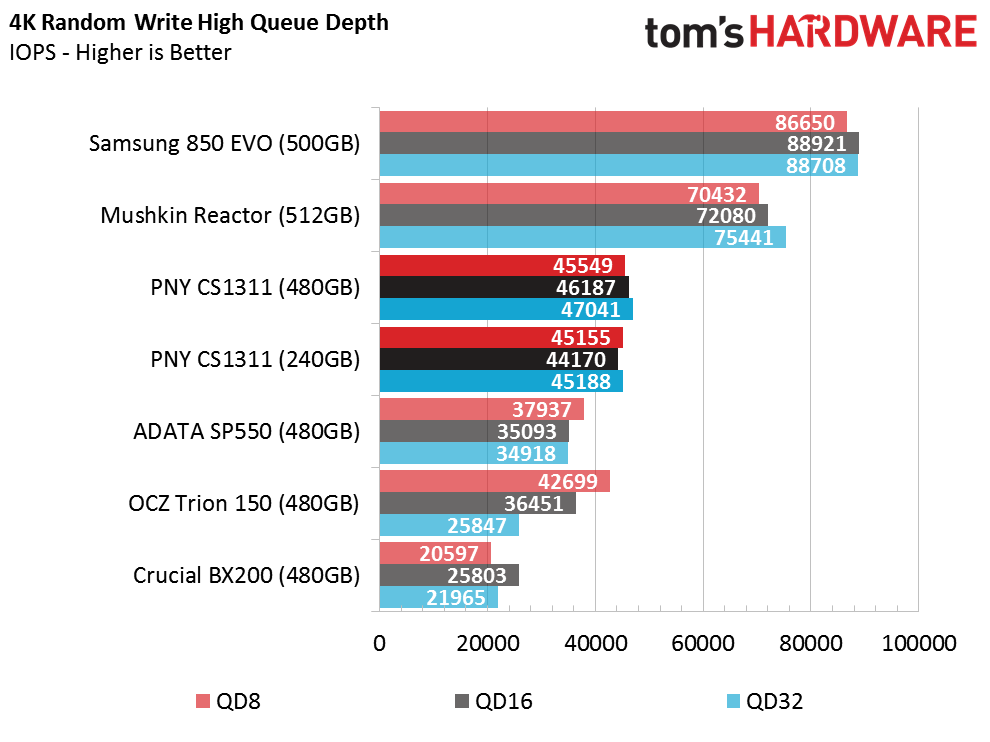
The CS1311's random write performance falls in the middle of the test group. Again, we see a wide gap between the 480GB CS1311 and 500GB 850 EVO that goes all the way down to low queue depths. By a queue depth of four, the 850 EVO doubles the CS1311 480GB's numbers. The PNY drives fail to clear their emulated SLC cache fast enough to accelerate moderate workloads.
Current page: Four-Corner Performance Testing
Prev Page Specifications, Pricing, Warranty And Accessories Next Page Mixed Workload And Steady State
Chris Ramseyer was a senior contributing editor for Tom's Hardware. He tested and reviewed consumer storage.
-
cknobman Another one bites the dust.Reply
Sorry but I cannot see much of a reason to go with anything besides the Samsung right now.
-
2Be_or_Not2Be Thanks, Chris, for showing why we shouldn't buy this "one-step-back" SSD.Reply
It reminds me of when Honda introduced their new (new at the time) Insight hybrid. If you don't beat, match, or at least get very, very close to the market leader's (Prius) performance, you're not going to do very well with that model.
These "new" SSD models that have serious shortcomings aren't even worth purchasing for the price-savings over the EVO. -
3ogdy Yaaaaaaaaaaaaaaaaaaaaaaaaaaaaaaaaaaawn.Reply
There are so many players and products on the market in the SSD space right now that releasing more makes no sense unless there's anything special about it. They're all capped at SATA 6Gbps and performance sacrifices aren't worth the price difference ($7?!). I remember back in the day when SSDs were interesting. Now announcing a new SSD is like announcing a brand new higher-clocked Pentium IV CPU.
That's without even considering the already boring pricing on these things. Samsung's been selling the 500GB EVO for around $150 for way too long. Thankfully, they've come up with V-NAND, otherwise SSDs feel like '90s products already. At least 10 years on the market and no progress (thank you, SATA). Wake me up when 500GB drives are sold for less than $100 and then, maybe then, we could get this whole turtoise of an industry just a frucking bit forward. Until then, SSDs are not worth reviewing, except for a new case design they could feature. Meh. -
jojesa Most users wont see the difference in performance. I have installed both SSDs on the same Dell Latitude model and they bootup time, apps loading and shut down time looks exactly the same. I cannot tell the differences.Reply -
zodiacfml Please don't praise the Samsung too much as we don't want them monopolizing the SSD market. I think they are squeezing the prices down to prevent competitors from growing.Reply -
Jack_565 I would buy this just for the outward appearance of the SSD, if it goes on sale then i might consider one.Reply
Makes me wonder why cosmetic SSD Skins/Cases aren't a thing, ignoring voided warranties. -
mapesdhs Again nothing to compete usefully with the 850 EVO, though at least in the UK pricing for 850 EVOs has been going up a lot since xmas, especially the 250GB which reached a low of 53 UKP over the holiday season, but now is back right up to over 70 UKP. The 500GB has been more stable, and better value, but IMO a "good" SSD like the 850 EVO 500GB is not dropping below 100 UKP here because it doesn't need to. This happened before with the Samsung 830 a few years ago, people were happy to pay a lot more than the 125 UKP price offered by one UK seller for a couple of weeks (they sold over a thousand units), so pricing for 256GB models in general went up for several months.Reply
What happened to the competition SanDisk said they were going to bring to the market? I'm sure toms reported a couple of years ago that SanDisk was planning an 8TB model reasonably soon.
